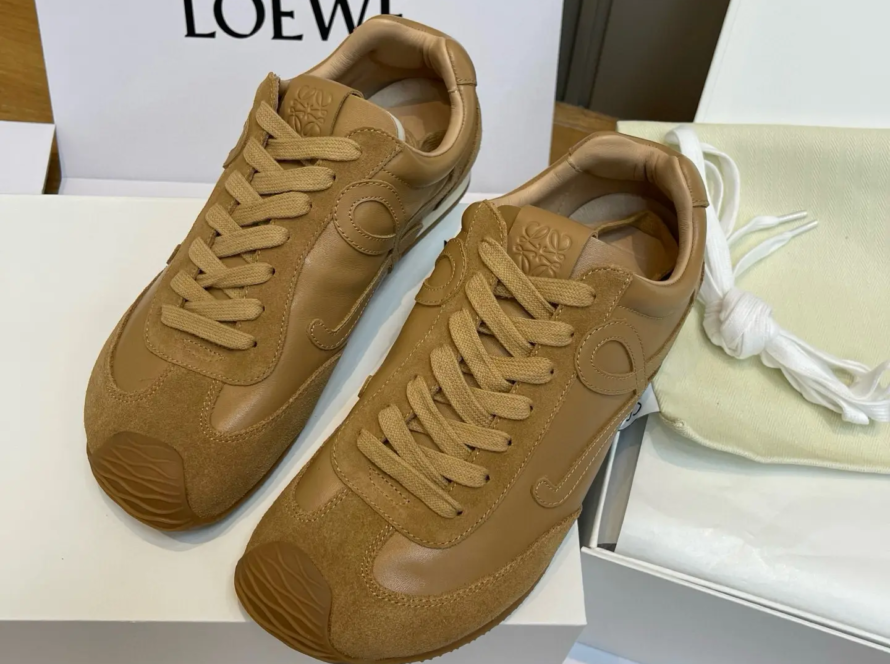
Elevating Elegance: The Art and Science of Painted Leather Shoes
For the discerning collector of luxury footwear or aficionado of bespoke fashion, the appeal of leather shoes lies in their craftsmanship, heritage and timeless elegance. However, even the most sophisticated shoes can fade, become worn, or simply fall out of sync with a well-thought-out wardrobe. Enter Leather shoe spray painting— A sophisticated solution for revitalizing, personalizing or rescuing treasured pieces. Rather than being a crude DIY hack, modern spray painting techniques can deliver a transformative touch while retaining the integrity of fine leather when executed with precision.
Why spray paint? A connoisseur’s perspective
Luxurious leather demands respect. Traditional polishing or staining can hide minor imperfections, but spray painting offers unparalleled versatility for bold customization or flawless restorations. Think of it as high fashion for footwear:
- Color youthfulness: Restore faded Edward Greens or faded Hermès boots to their original vibrancy.
- creative expression: Transform a classic Oxford shoe into a metallic statement piece or add a subtle gradient effect.
- damage control: Limited edition collectibles that show camo wear, discoloration, or sun damage.
The key is to choose the right products and techniques to ensure the quality of the leather.
Key Points: Choose the Right Spray Paint
Not all sprays are created equal. Luxury leather requires a formulation that respects its delicate characteristics:
- Special leather coating: Choose a flexible, non-cracking acrylic such as Angelus Direct Spray or Sapphire Aviation Spray. They will penetrate the leather fibers without suffocating them.
- Pigment quality: High-end spray micropigments ensure even coverage and depth, mimicking the richness of factory finishes.
- compatibility: Verify the paint is suitable for your leather type – full-grain, patent or suede (unpigmented suede requires pre-treatment).
For tips: For heirloom-quality pieces, consider consulting a custom shoemaker or leather conservator first.
Ritual: The perfect step-by-step guide
Phase One: Preparation
- Clean and degrease: Use a pH-neutral leather cleaner (e.g. Colonial 1909) to remove dirt and oil. Residues can affect adhesion.
- Deglazing (optional): For heavily finished leather, lightly sand or use a glaze remover (e.g. Filipino) opens pores for better paint absorption.
- Masks and protection: Shields soles, seams and hardware with painter’s tape and silicone covers.
Stage 2: Application
- test first:Spray a hidden area (inside of tongue) to check color accuracy and leather reaction.
- strategic layering: Hold jar 8-10 inches away and apply with thin, sweeping motions. Avoid oversaturation—4-5 thin coats is better than one thick coat.
- drying between layers: Allow 15-20 minutes for drying; patience will prevent stickiness or cracking.
Stage 3: Sealing and Conditioning
- Protective finish: Seal with a flexible acrylic facing (e.g. Three hour topcoat) to protect against water and wear.
- Mild conditions: After 48 hours, apply nourishing leather balm (Bicmore Bic 4) to maintain softness.
Why It Works: The Science of Leather and Paint Bonding
Leather is a porous fibrous material. High-quality spray paint penetrates the surface, creating a bond that flexes with movement rather than peeling. The advanced formula includes plasticizers that mimic leather’s natural elasticity, which is essential for comfort and longevity. Unlike cheap paint, luxury spray avoids the “plastic” sheen and retains the shoe’s organic shine.
When to err on the side of caution
While spray paint was revolutionary, it wasn’t universal:
- Vintage shell cordovan leather: Its unique wax content requires expertise.
- exotic skin: Crocodiles, pythons or ostriches require specialized paint to maintain their texture.
- emotional value: For irreplaceable heirlooms, seek artisan intervention.
Conclusion: The resurgence of fine footwear
Painting leather shoes is no longer a compromise but an art form. For lovers of luxury, it bridges practicality and creativity, extending the life of investment pieces or completely redesigning them. By combining high-quality products with meticulous technology, you can protect the beauty and structural essence of your precious footwear. Whether reviving a weathered Chanel slingback or creating a one-of-a-kind Louboutin alternative, this approach allows you to redefine elegance on your own terms.
Frequently Asked Questions: Painted Leather Shoes
Q1: Will spray paint make my leather shoes hard or uncomfortable?
A: Not if done correctly. High-quality leather sprays contain softening agents that maintain suppleness. Always condition after painting to maintain softness.
Q2: Can I use regular spray paint from the hardware store?
Answer: Absolutely not. Standard sprays lack elasticity and tend to break. Invest in a leather-specific formula – your $800 Berluti is definitely worth it.
Q3: How long does the paint on leather shoes last?
A: With proper preparation and sealing, expect 1-3 years of wear. Touch-ups can further extend your life.
Q4: Can I spray paint patent leather or suede?
Answer: Patent leather can be painted, but it needs to be deglazed first. Suede requires a pigment-free spray and a specialized suede prep.
Q5: Will the color stain on clothes?
A: High-end paints have deep adhesion, but sealing cannot be ignored. Top coat ensures color fastness.
Q6: Can I completely change the color of the shoes (for example, black to white)?
A: Yes, but the transition from dark to light requires multiple coats of primer (use a white primer) to achieve true color.
Q7: Can the spray paint be reversed?
A: No, this is a permanent change. For an experimental change, try a temporary leather dye first.
Q8: How to maintain spray-painted shoes?
A: Avoid using harsh detergents. Use a soft brush to remove dirt and maintain every 3-6 months. Store away from direct sunlight.
Q9: Can I spray paint the leather soles or edges?
A: Yes, but expect to wear out faster. Use edge-specific paint (Giardini Edge Dressing) to ensure durability.
Q10: Should I try this on designer shoes myself?
A: If you are unsure, please consult a professional. For pieces that are rare or have sentimental value, expert restoration is a wise move.
Use spray paint as a tool for preservation and transformation—your collection will thank you.


